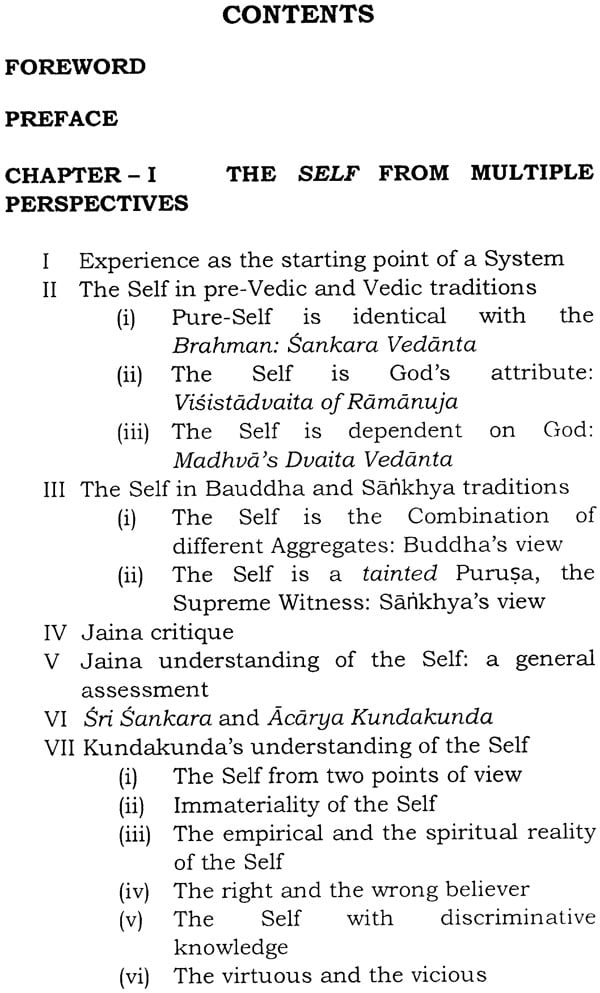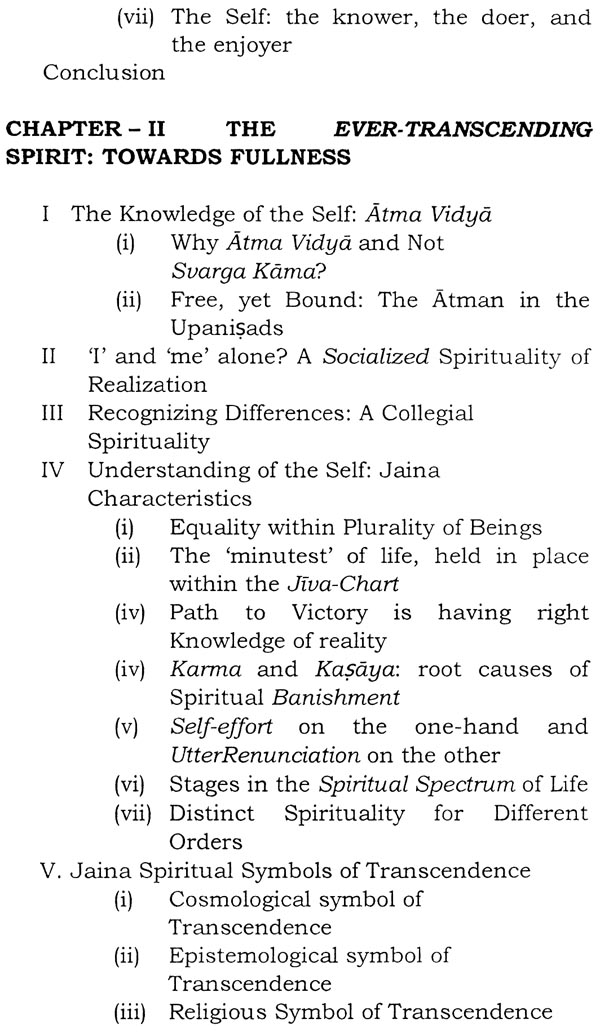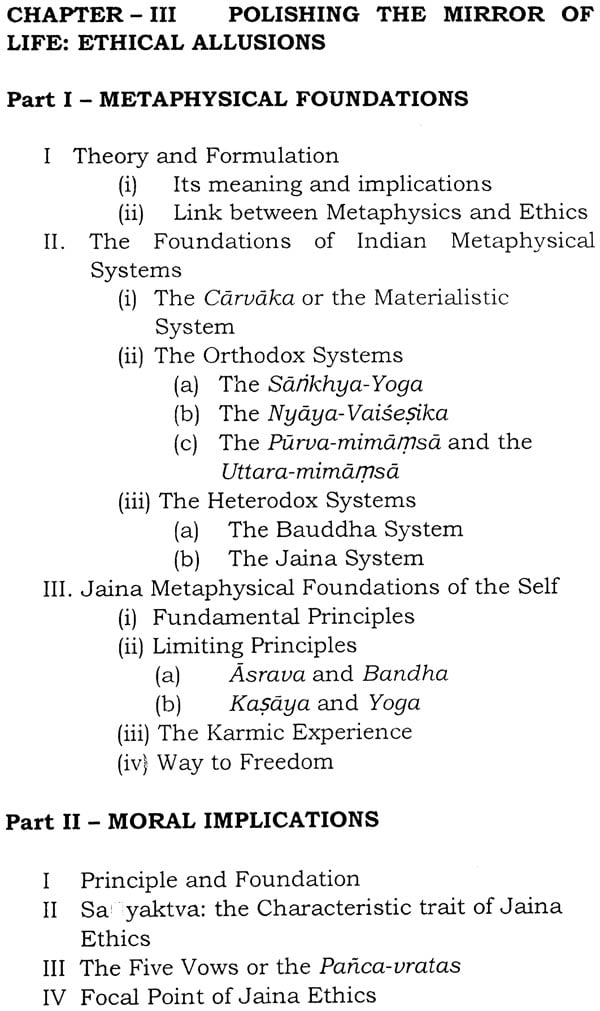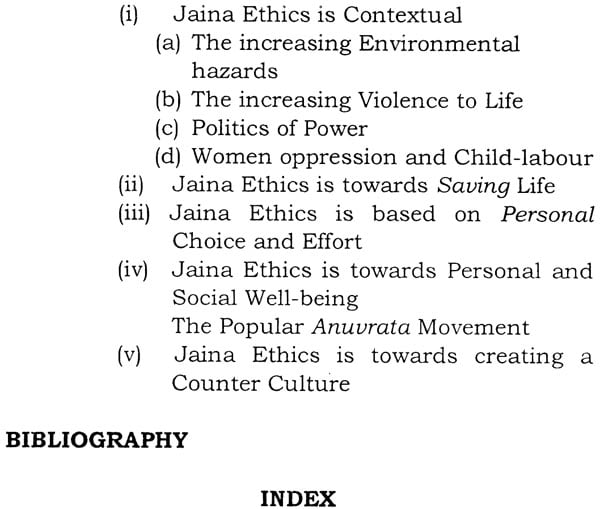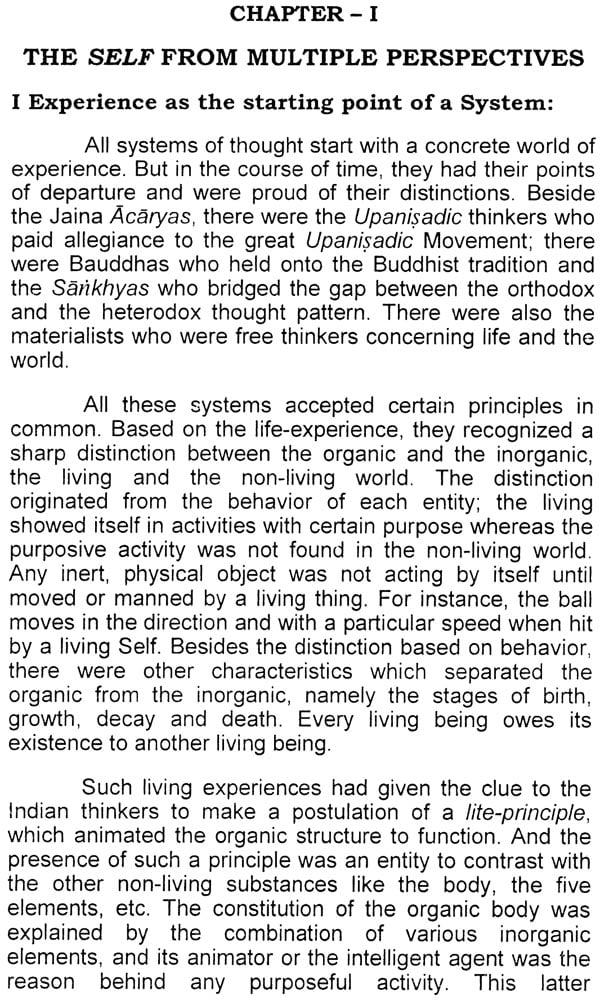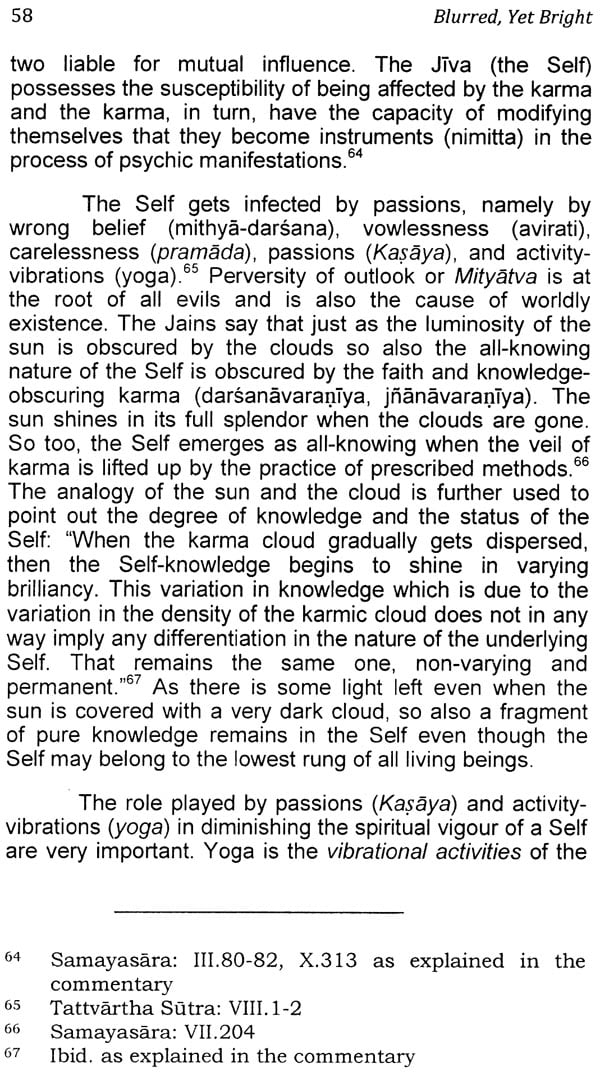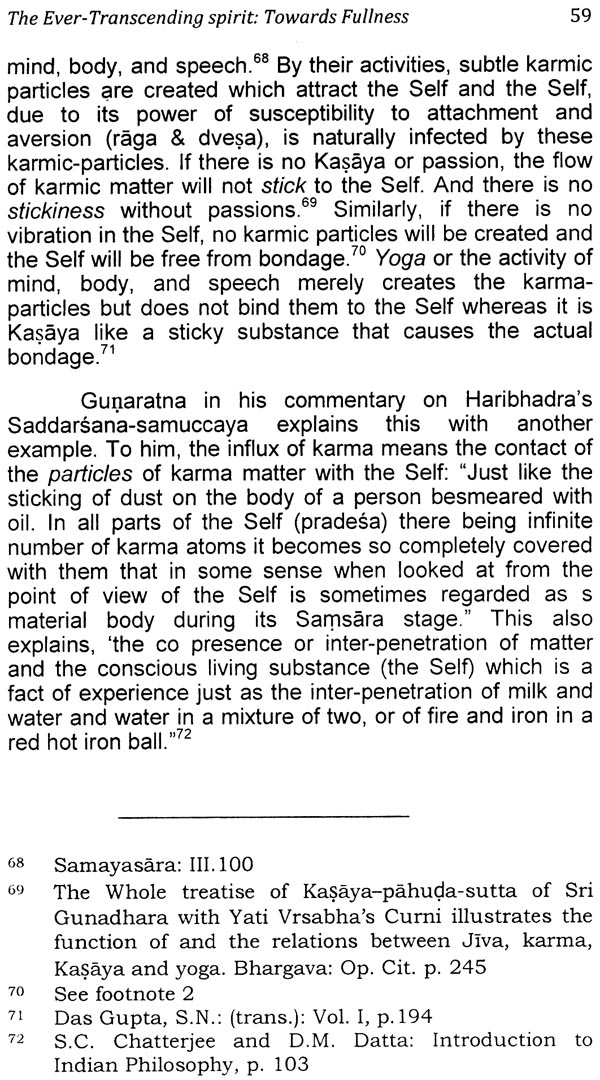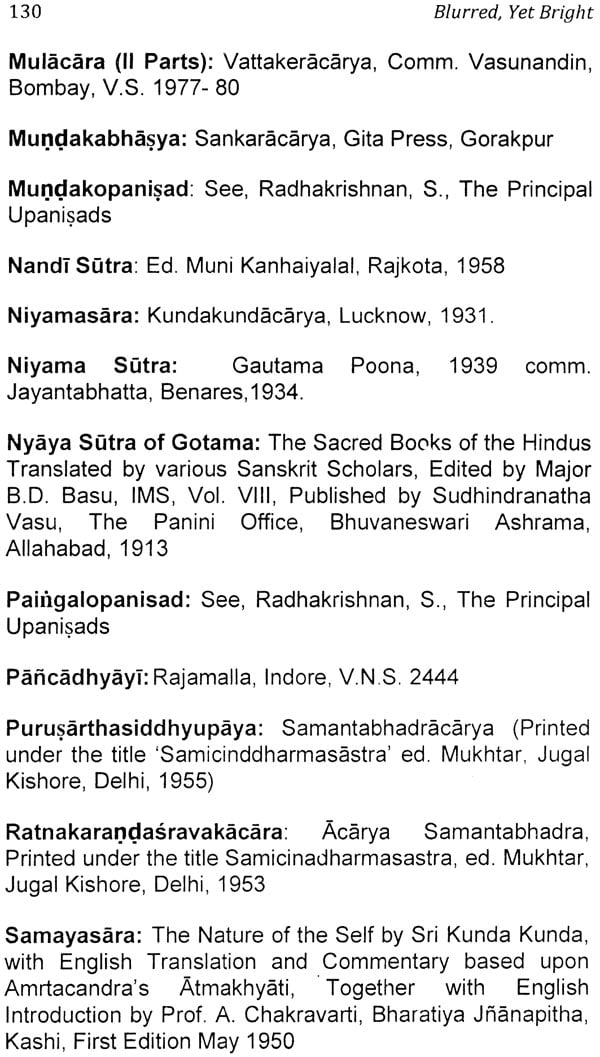
Blurred, Yet Bright (Journey into the Self in Jaina Tradition)
Book Specification
| Item Code: | NAS059 |
| Author: | Dr. Vincent Sekhar SJ |
| Publisher: | Sri Satguru Publications |
| Language: | English |
| Edition: | 2016 |
| ISBN: | 9788170309468 |
| Pages: | 160 |
| Cover: | HARDCOVER |
| Other Details | 8.50 X 5.50 inch |
| Weight | 320 gm |
Book Description
The book is an attempt at describing a person's higher ideals and values in life, the journey and the hardships one undertakes in achieving one's goal, etc. from the Jaina perspective in particular. The philosophical discussion about who this person is sets the foundation for the meaningful conduct and engagement of the Jains in the world. The description of this Jain story of the Self recognizes and sensitizes the importance of one's engagement in noble deeds and philanthropy without any attachment or greed or desire for fame. The Jaina ethos thus described transcends a person's class and creed. Incidentally, the book also serves students of philosophy as a general introduction in understanding the nature of the Self from multiple philosophical perspectives, giving them a comprehensive view about Indian philosophy and culture.
Vincent Sekhar is a Jesuit priest from India. It is rare among Catholic priests to do higher studies in Jain religion and philosophy. Sekhar's doctoral thesis was on Dharma in Early Brahmanic, Buddhist and Jain traditions. His higher studies in Jainism and his interest in promoting interreligious dialogue for harmony and reconciliation have been instrumental in initiating Jain- Christian dialogue in the Indian subcontinent. He holds a Master's degree in Sanskrit from Madras University and another in Contextual Theology from Vidyajyoti College of Theology, Delhi. He served for 12 years as a faculty of philosophy Arul Anandar College, Karumathur, Madurai Dist. He undertook post- doctoral researches in Woodstock Theological Center, Georgetown University, Washington DC, taught in Fordham University, New York, and lectured at Berkley Center for Religion, Peace and World Affairs, Washington DC, and the Institute for Catholic Thought and Culture, Seattle University, Seattle. He is now the Executive Director & Dean of Research in the Institute of Dialogue with Cultures and Religions (IDCR), a Ph.D. Research Institute on Comparative Religion and Culture, affiliated to the University of Madras, and located in Loyola College, Chennai.
Scriptures generally acknowledge that human beings are at the centre of life and also the foremost of all creation (Genesis 1.26) and Jain scriptures, particularly, extol the human birth to be the unsurpassed among all forms of life (Acaranga 1.5.2). The reason for such an exaltation is due to the Knowledge and perceptive power of a human being and the capacity to transcend all limitations, and mainly so, because of a tendency to commit oneself to lofty ideals even at the risk of one’s own life. There are a number of arguments to show how human beings are different from others in evolution. Scientific evolution points out that human beings are almost identical with the apes genetically. But still, apes do not build temples and do not take mental evolution in their own hand. But humans do. Our bodies are made up of similar stuff as the earth and other elements, but the human minds are far superior to these elements. Only human beings have the conscious choice to elevate themselves, become noble beings, follow the precepts of higher beings, etc.
The word Soul (Atman) or the Self is not the right translation for Jiva in Jainism. Jiva is life, basically, and it pertains to any living organism. Jiva is also known as prani, because it possesses ‘life forces,’ which are external or physical and internal or psychic. And the term is used to describe both the embodied as well as liberated beings. The embodied beings or the worldly selves possess both physical and psychic life-forces. The liberated beings possess only psychic life-forces. The Jains accept six categories of living beings. One of its categories, namely, the trasa-Jiva ts further classified as one-sensed, two-sensed, etc. and it includes human beings possessed of five senses and the mind. For the sake of convenience and brevity, | am limiting my understanding of the Self having recourse to only some of the Jaina texts, especially Samayasara, by Acdarya Kundakunda (second to third century CE), known for his erudition and writings. His several other works like the Niyamas4ra, Pravacanasara, Pancastikayasara, etc. have 1 given him a scriptural authority to the Digambara Jains, matching equal to the Svetambara Canons, 45 in number. Samayaséra is Quintessence of Religion and the central Philosophy of the Jains. It treats Jiva or the Self and its addiction to the non-Self, the cause of bondage, and the way to freedom.
When | looked for a suitable title to my book, the image of a mirror came to my mind. As one stands in front of the mirror, one is able to see one’s self. If the mirror is blurred, the image too looks blurred, and vice-versa. This imagery is used often in the Jain texts to explain Jiva or the Self. Jiva in its pure-form is all-perfect, bright, and brilliant, like the clear mirror. In its tainted-form, it is tinged with karma, good and bad actions, and hence kept in bondage, struggling to climb up the ladder of perfection to reach its highest goal, a liberated state, to realize its pure- form. The Self is compared to the Mirror — the pure-Self to the clean-Mirror and the tainted-Self to the blurred, dusty- Mirror. As the mirror needs cleaning, the Self requires purification, until its perfect image can be completely seen. | remember the Bible quote, more or less rendering a similar meaning: In Christianity, Saint Paul tells the Corinthians in his first letter (13:12), "Now we see only a dim likeness of things. It is as if we were seeing them in a foggy mirror. But someday we will see clearly. We will see face to face. What | know now is not complete. But someday | will know completely, just as God knows me completely."
The Journey into the Self in Jaina tradition is a trial in Knowing and understanding its true nature and how it is related to the world and other things. The Journey is simple to understand, perhaps easier with an Indian philosophical background. The Journey will point how human persons become sullied in the process of the several activities they are involved and how they struggle to come out of the bad links and eventually experience the interior peace and freedom. This is the Journey of oneself in the journey through the thin-thick, light-dark forest of activities and experiences, where one actually realizes the state of bondage and of liberation. The story tells us how powerful karma and its effects are. Be it a starting of a business, or mending a relationship, or a job-seeking, or an achievement celebrated, the hardship one undertakes, the anxiety one goes through, and the hope that motivates are in fact a series of behavior, activities, efforts, etc. said in a simple term karma. How necessary and how powerful it could be in human/animal life!
The Journey, as it would be seen, is descriptive in nature, going through the ascent and the dissent in the spectrum of life. In a sense, it Its introspection into one’s own personality, seeking one’s own true abode. The Journey would also suggest the means of transcendence, transcending good and bad, rewards and punishment, this world and the other world, happiness and sorrow, etc. with the sole intent to know and to realize the true Journey of oneself as omniscient, bright and brilliant.
People in the West wonder whether there is a philosophy called /ndian. If perhaps they could see the hoard of literature in it they would see the truth, and much more, would acknowledge the depth of reflection of the Indian seers or masters on the universe and the beyond. The Vedic and the Upanisadic materials from the Orthodox side and the earliest literature of the Indian materialists (Sankhya), the Jains and the Buddhists are illustrative of a fine philosophical genre, a taste for an avaricious mind to know the truth about the reality of the Self and the Universe, their connectivity. with the Beyond. Hence it is necessary for me to take a simple survey of how the Self is understood in different Indian philosophical traditions. | have tried to use simple language and explaining the concepts and ideas in brief, summary form mainly for students, who may not have any grounding in Indian philosophy. Hence, this book is an introduction to the subject discussed.
**Contents and Sample Pages**
